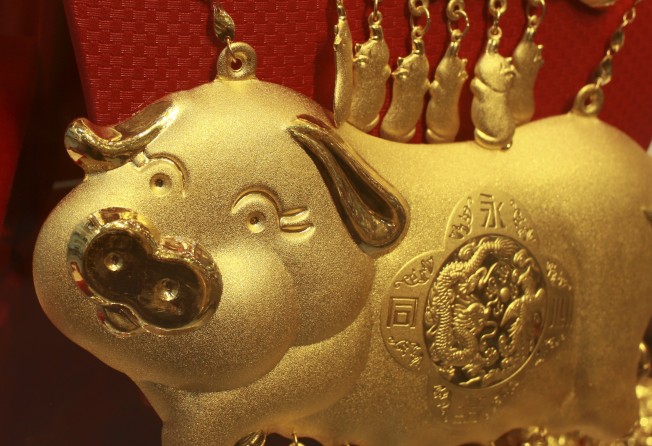Asia’s super rich advised to add more gold to their portfolios to protect assets amid storms pounding equity markets
Gold has been hammered of late, and some advisers are telling their wealthy clients to take advantage of lower prices and add to their stockpiles.

Advisers to Asia’s super rich think their clients should put more of their money into gold, taking advantage of price declines to buy the yellow metal amid volatile global markets and US-China trade tensions, a new report said.
A survey of these advisers found a preference for gold holdings amounting to 5 per cent to 10 per cent of total assets. That is up from an earlier recommendation of 3 per cent to 5 per cent, according the report, “Going for Gold”, which was released on Wednesday by US financial services firm INTL FCStone.
Most advisers in the survey – 62 per cent – said their clients should or maybe should increase their weighting in gold, versus 38 per cent who said they should not. The survey was of 174 private banks, family offices, wealth management advisers and other market experts in Asia.
“Not only does Asia, and especially Singapore, offer a remarkably complete and professional gold market infrastructure, but the current global economic, financial and geopolitical factors could be considered as highly supportive of the rationale to hold and grow the portions of gold in any [high net worth] portfolio,” said Martin Huxley, head of precious metals Asia at INTL FCStone.
Investors in China and India are big gold buyers.
Meanwhile, the number of ultra-wealthy in China has grown, with those holding at least 10 million yuan (US$1.5 million) in investible assets booming from 180,000 individuals in 2006 to nearly 1.6 million in 2016, according to the fifth “China Private Wealth Report” by Bain & Company and China Merchants Bank.
Chris Land, vice-president of Holborn assets, said he had suggested to his wealthy clients that gold make up at least 10 per cent of their portfolios.
“Gold has sold off over the past few months as US dollar interest rates have increased, so there is more opportunity to buy,” he said. “For clients who don’t have an allocation of gold in their portfolios, now is time to increase that.”
Spot gold prices are way off the highs seen in 2011, when the yellow metal was trading above US$1,820 per ounce in August, after an impressive climb from early November of 2008, when it was selling for under US$750 per ounce. It was most recently trading at US$1,194.38 per ounce, on a downward path from US$1,347.20 per ounce in April and essentially at the level seen in December 2009. It is down more than 8 per cent for the year, in part due to the strength of the US dollar, which traders are seizing as a safe haven amid the US-China trade war.
In February, Hong Kong’s gold exchange announced it was in talks with Singapore, Myanmar and Dubai to establish a gold commodity corridor to promote yuan-denominated products under the mainland’s “Belt and Road Initiative”. It could connect a proposed warehouse in the Qianhai free-trade zone, capable of storing 1,500 tonnes of gold, with commercial users and traders in countries along the belt and road’s trade routes.
According to INTL FCStone, 50 per cent of Asian clients choose to store gold in Singapore and 35 per cent in Hong Kong.